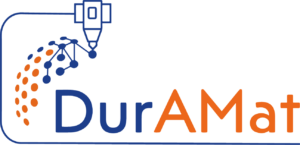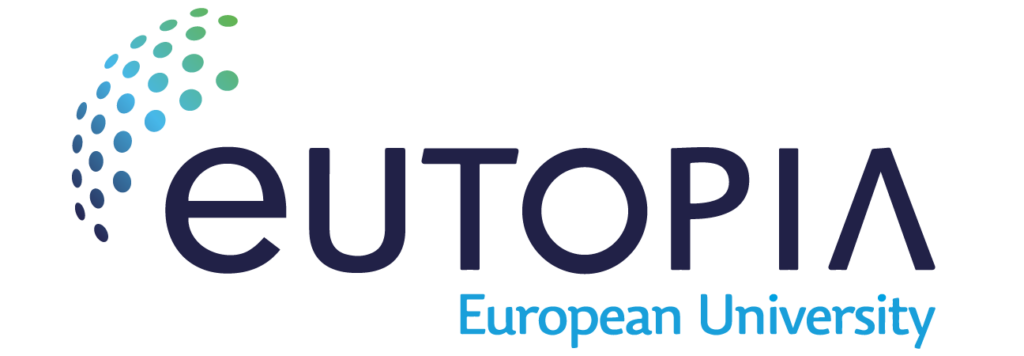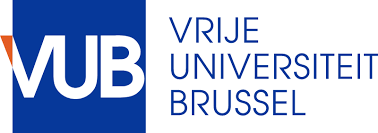RECRUITMENT
JOIN OUR TEAM!

The partners in the EU-Marie Skłodowska-Curie Doctoral Network DurAMat are recruiting 11 motivated PhD students, with research and training starting in April 2024.
DurAMat joins academia and industry, providing scientific and personal development to young researchers in the “Sustainable production, processing and modelling of durable additive manufactured materials for enhanced performance and long-term service in complex environments.”
The DurAMat consortium consists of 6 Universities, 2 Research Centres and 5 Industrial Companies from 6 European Countries. It will train 11 doctoral candidates in a holistic approach, encompassing cross-disciplinary scientific knowledge transfer, training activities, and cultivating interpersonal and transferable skills.
As a Doctoral Candidate (DC) in DurAMat you are part of this research and training network, including secondments where you will do part of your research in another institute (university, research centre or industrial partner), joining forces with other DCs, and be heavily involved in trainings organised by all partners at the different partner locations. You will interact intensely with the other DCs in both research and training activities and will travel through Europe to the different locations to meet and learn!
Your profile:
Researchers funded by MSCA Doctoral Networks need to fully satisfy the following criteria:
- Can be of any nationality.
- Cannot have a doctoral degree at the date of their recruitment. Be an early stage researcher as a doctoral candidate (DC). DCs are those who are, at the time of recruitment by the host, in the first four years (full- time equivalent) of their research careers. This is measured from the date when they obtained the degree which formally entitles them to embark on a doctorate.
- Have a master degree (or obtaining a degree before end of February 2024) granting access to doctorate studies. The degrees required for the various positions are all on the scientific master level: material science, metallurgy, chemistry, physics, computational modelling / A.I. of materials, or related fields in science, are all relevant disciplines.
- Not have resided or carried out their main activity (work, studies, etc.) in the country of their host organization for more than 12 months in the 3 years immediately prior to their recruitment.
- English language: Network DCs must demonstrate that their ability to understand and express themselves in both written and spoken English is sufficiently high for them to derive the full benefit from the network training.
- Candidates must provide all requested information, including a cover letter, a motivation for application (indicating which topics are preferred), a detailed CV, declaration of activities and residence status before December 30, 2023, and a signed reference letter from an academic referee, preferably the academic master thesis promotor. All documents need to be merged in one single pdf document before uploading. Application will only be considered eligible in case of submission of all documents before the deadline.
- We have 11 topics. Each applicant can choose minimum 1 and maximum 3 positions for application.
- Applications are now open through this link (deadline: 30/12/2023 )
- For more information contact us: info@duramat-project.eu
Your benefits and salary:
The successful candidates will receive an attractive salary in accordance with the MSCA regulations for Doctoral Candidate (http://ec.europa.eu/research/mariecurieactions/) in the form of a scholarship. The exact salary will be confirmed upon appointment and is dependent on the country correction factor (to allow for the difference in cost of living in different EU Member States). The guaranteed PhD funding is for 36 months.
The salary includes;
- a living allowance,
- a mobility allowance,
- a family allowance (if already married).
- long-term leave and special needs allowances (if applicable)
In addition, funding is provided for
- research, training and networking activities
- management and indirect costs
TOPICS:
Host |
Vrije Universiteit Brussel, VUB, Brussels, Belgium |
Objectives |
The main objective of the research is to study the relationship between the formed interphases in metal AM repair approaches and the resulting atmospheric corrosion behaviour and Stress Corrosion Cracking (SCC) of the repaired metal, in relation to the AM printing conditions and thermal post-processing. To achieve this challenging objective, the specific aims are as follows:
Supervisor: Iris De Graeve |
Host |
NOVA-University of Lisbon, Portugal |
Objectives |
The main aim is the implementation of a thermodynamically oriented framework for selection of specific compositions for repair of large structural components based on widely used ferrous and Ni-base alloys towards their application in demanding service conditions and the mechanical performance analyses. The objectives are:
|
Host |
RISE, Sweden, with PhD awarded by VUB, Brussels, Belgium |
Objectives |
The main objective of this IRP is to study the relationship between metallic components produced with different AM techniques and the material properties such as the susceptibility to hydrogen embrittlement, the mechanical durability, and the corrosion resistance in the marine environment, where the metallic components are subjected to mechanical stresses, moving assemblies, degradation stresses, cathodic protection and fouling. No standardized guidelines for use of AM materials exists for the blue economy sector, which this work will aim to contribute to (with a standardization expert from the EAB as mentor for DC3). To achieve this challenging objective, the specific aims are:
|
Host |
Helmholtz Centrum HEREON, Geesthacht, Germany, with PhD awarded by Kiel University, Kiel, Germany |
Objectives |
This work will focus on machine-learning guided development of evenly degrading magnesium alloys for bioresorbable implants. In particular, we aim at understanding the influence of WAAM (Wire-Arc-Additive-Manufacturing) fabrication process parameters (e.g., wire composition, diameter, arc discharge voltage and time, cooling rate) on the degradation profile of produced metallic materials (rate and especially the extent of localized corrosion). The aim is to establish relevant process-structure-property relationship and identify the optimal fabrication parameters for uniformly degrading Mg alloys without compromising the mechanical properties. Samples produced will be tested using custom-made Robotic Testing Platform. A data-driven machine-learning model will be developed to determine the impact of the individual process parameters on the selected set of target properties and validated for predicting the properties of untested material. Mechanistic understanding of the driving forces of localized corrosion will be achieved by performing model experiments on selected magnesium scaffolds. A unique combination of spatially resolved electrochemical and surface characterization methods will characterize Mg scaffolds exposed to the simulated body fluid environment. Research stays are planned at NOVA University Lisbon (Portugal), RISE (Sweden) and Cortronik (Germany). Supervisors: Prof. Dr. Mikhail Zheludkevich, Dr. Sviatlana Lamaka and Dr. Christian Feiler. https://www.hereon.de/institutes/surface_science/index.php.en |
Host |
Vrije Universiteit Brussel, VUB, Brussels, Belgium |
Objectives |
The main objective of the research is to study the relationship between the surface and in-depth composition, thickness, microstructure and interface properties of metallic functional coatings applied by AM on conventional metal substrates (e.g., Inconel coating on steel substrate) and the resulting corrosion behaviour, in relation to the AM conditions and thermal post-processing. To achieve this, the specific aims are:
Supervisor: Iris De Graeve |
| Host | |||||
| NOVA- University of Lisbon, Portugal | |||||
| Objectives | |||||
The primary goal is the development of deposition strategies for coating metallic components fabricated by WAAM. Key objectives include:
|
| Host | |||||
| Vrije Universiteit Brussel, VUB, Brussels, Belgium | |||||
| Objectives | |||||
AM leads to totally new microstructures that result in unique corrosion behaviour. This corrosion, mostly caused by (micro-)galvanic coupling of phases with different compositions / nobility, will be experimentally characterised in WP1 and WP2 for AM fabricated and repaired metal alloys, as well as for AM coatings on metal alloys. The objective of this project is:
Supervisor: Iris De Graeve |
Host |
Technische Universität DRESDEN, Germany |
Objectives |
Various modelling approaches have been proposed to link the microstructure to mechanical properties of the material. One of the most promising approaches is the phase field crystal (PFC) or its coarse-grained amplitude expansion (APFC) model. It allows for atomistic resolution but operates on diffusive time scales. Recent developments allow to parameterize these models for specific materials. The objective of this project is to develop these models and simulate with realistic microstructures and appropriate material specific approximations. This contains research visits at Warwick (UK) and Gothenburg (Sweden). Background You should have a Master degree in Mechanics, Mathematics or Physics, knowledge on the numerical solution of partial differential equations by finite elements and decent knowledge on scientific programming, preferably in C++. Supervisor: Prof. Dr. Axel Voigt https://tu-dresden.de/mn/math/wir |
Host: Helmholtz Centrum HEREON, Geesthacht, Germany, with PhD awarded by Kiel University, Kiel, Germany
Objectives: This work will focus on data-driven discovery of new corrosion inhibitors for additively manufactured aluminum alloys. A database of corrosion inhibition efficiencies for additively-manufactured aluminum alloy will be generated using a custom-made Robotic Testing Platform. The molecular structure of the used corrosion inhibitors will be encoded to generate a database of input features for training of a predictive quantitative structure-relationship model. Following an active learning approach, the training database and the robustness of the developed machine learning model will be improved. The most promising inhibitors will be impregnated into a coating matrix to evaluate their performance in a coating system.
Research stays are planned at Vrije Universiteit Brussel (Belgium), Smallmatek (Portugal) and BASF (Germany).
Supervisors: Prof. Dr. Mikhail Zheludkevich, Dr. Sviatlana Lamaka and Dr. Christian Feiler. https://www.hereon.de/institutes/surface_science/index.php.en
Host |
University of Gothenburg (Gothenburg, Sweden) |
Objectives |
The project aims to utilize biocomposites as coatings for metallic components produced via Wire Arc Additive Manufacturing (WAAM). These biocomposites are sensitive to humidity due to moisture absorption in their bio-polymeric matrices and natural reinforcements. Our objectives are as follows:
By achieving these objectives, we aim to advance the use of biocomposites as effective coatings for WAAM-produced metallic components, optimizing their moisture-related properties, and reducing the reliance on extensive experimental testing. Supervisor: Mohsen Mirkhalaf (https://www.gu.se/en/about/find-staff/mohsenmirkhalaf) Research Group: https://www.gu.se/en/research/mechanics-of-materials |
Host |
University of WARWICK, United Kingdom |
Objectives |
In this project, you will train and validate machine-learned interatomic potentials (MLIPs) for exemplar AM metals using active learning techniques. These MLIPs can then be used to simulate fracture. Coupled with time acceleration techniques such as adaptive Monte Carlo, the long-timescale evolution of cracks under cyclic loading conditions will permit the study of fatigue crack growth. Background: Additively manufactured (AM) metals present a range of new opportunities and challenges that need to be understood across the scales. For example, AM parts have smaller grains and thus a higher density of grain boundaries than metals from traditional manufacturing, leading to more sites for cracks, reduced toughness and plasticity and increased residual stresses. This could make these materials susceptible to fatigue cracking, where repeated loading cycles lead to eventual failure of the material. Existing codes that rely primarily on empirical data to assess fracture mechanics and standards are not suited for these materials and may lead to either over- or under-conservative assessments. While atom-scale models could describe the processes at the crack front with sufficient precision, the timescales of fatigue crack growth so far remain beyond their capabilities. Supervisors and Research Environment: Prof. James Kermode and Dr Peter Brommer are based in the Multiscale Materials Modelling Laboratory (M3L) in the Warwick Centre for Predictive Modelling (WCPM) in the School of Engineering at the University of Warwick in the United Kingdom. Prof. Kermode has extensive experience modelling fracture at the atomic scale and developing MLIPs, while Dr Brommer is an expert in the use of adaptive Monte Carlo approaches. The PhD student working on this project will benefit from the vibrant cross-departmental research environment associated with WCPM and with the EPSRC Centre for Doctoral Training in Modelling of Heterogenous Systems (HetSys), which provides an allied cohort of PhD students working on related projects, as well as from Warwick’s excellent high performance computing facilities. Collaboration: Outcomes from this project will also be used to inform mesoscale models such as the phase field crystal models of DC8. The student will also work with DC5 to validate fracture results experimentally. Internships in both TU Dresden and VUB are planned to carry out these collaborative aspects. |
Application:
Please apply till December 30, 2023 via this link


